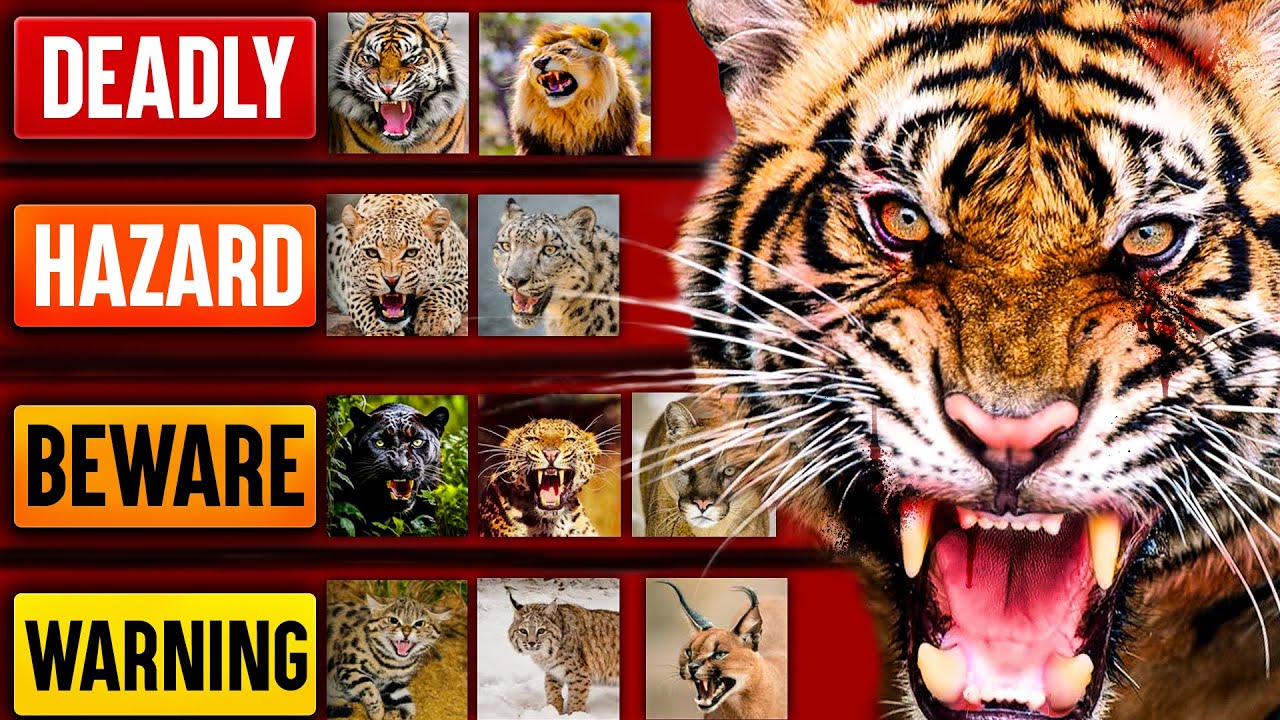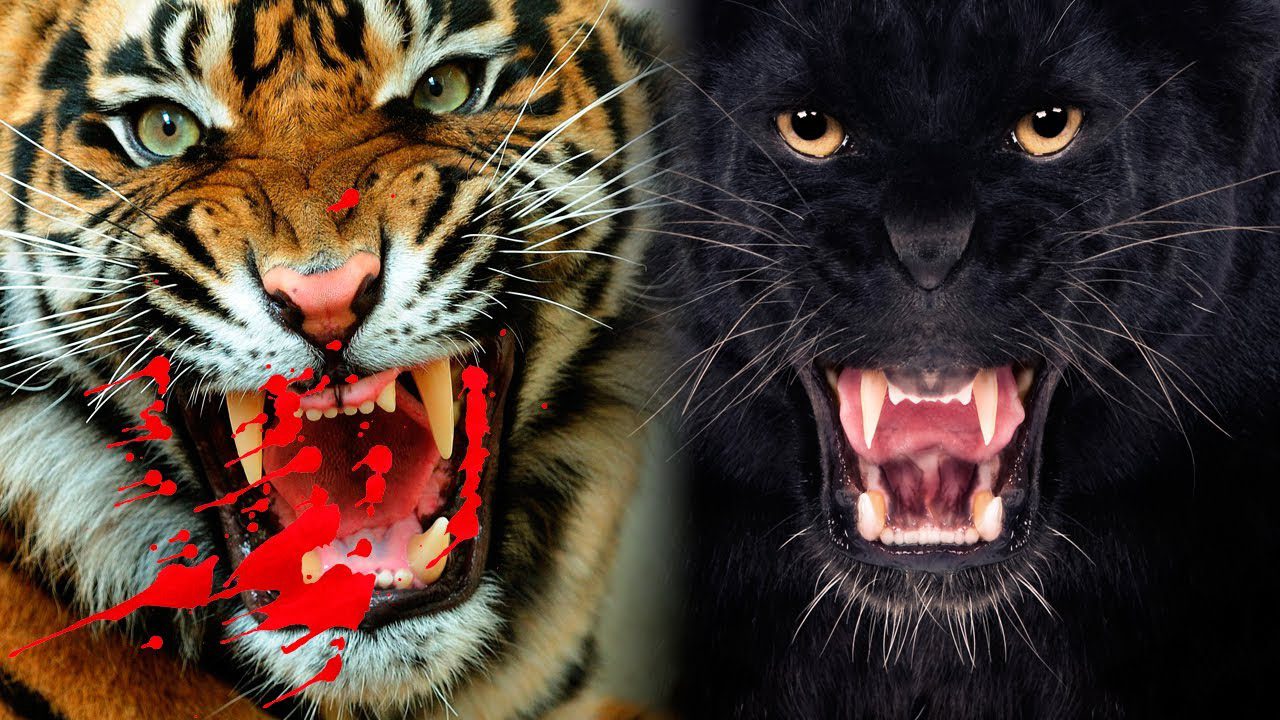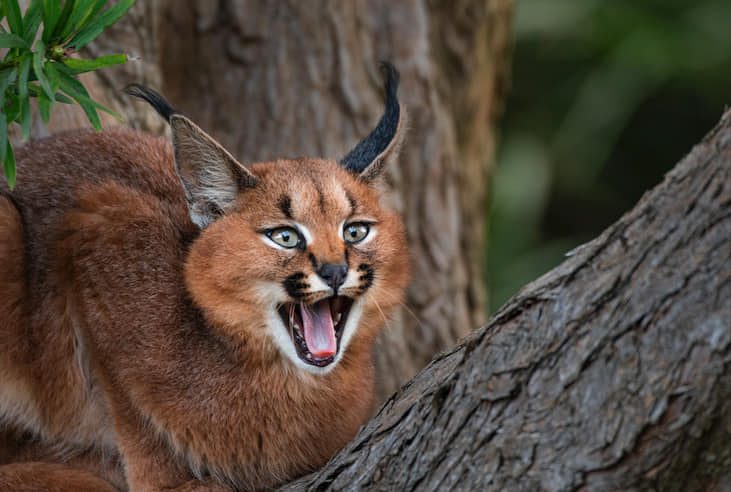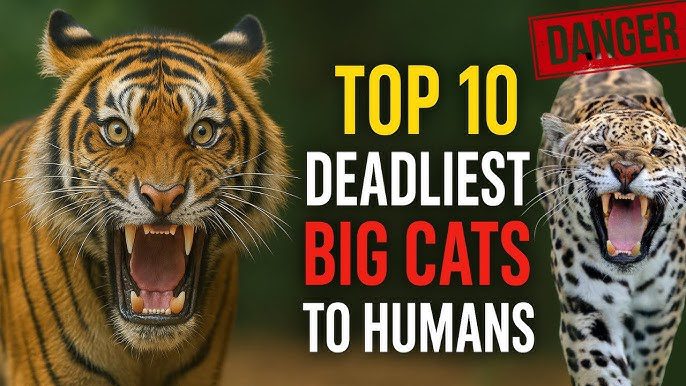Top 10 Deadliest Big Cats In The World
Introduction
Large felines, often referred to as “big cats,” have long captured human imagination due to their raw power, agility, and predatory prowess. These apex predators play a crucial role in their respective ecosystems, maintaining a delicate balance within the food chain. Their “deadliness” is a combination of several factors, including immense physical strength, highly refined hunting skills, and remarkable adaptability to diverse environments.
However, the relationship between humans and these magnificent creatures is complex and often fraught with conflict. As human populations expand and encroach upon wild habitats, encounters between humans and big cats are becoming more frequent, leading to tragic consequences for both. Understanding the behavior, ecology, and conservation status of these animals is crucial for promoting coexistence and ensuring the survival of these iconic species.

Lion (Panthera leo)
Lions, often called the “king of the jungle”, are known for their social structure, living in groups called prides. Their hunting strategies involve cooperative teamwork, where lionesses typically hunt large prey such as zebras and wildebeest. While lions primarily prey on ungulates, they have been known to attack humans, although such instances are relatively rare. These attacks often occur when lions feel threatened, are injured, or when their natural prey is scarce.
Tiger (Panthera tigris)
Tigers, the largest of all big cats, are solitary hunters, relying on their power and stealth to ambush prey like deer and wild pigs. Unlike lions, tigers do not form স্থায়ী groups and hunt alone. Some tigers, often referred to as “man-eaters”, have been known to specifically target humans. This behavior is usually attributed to factors such as old age, injury, or the scarcity of their natural prey, making humans easier targets.

Leopard (Panthera pardus)
Leopards are known for their adaptability, thriving in a variety of habitats from rainforests to savannas. Their hunting prowess is characterized by stealth and agility, often ambushing prey such as antelope, monkeys, and birds. While generally elusive, leopards can become dangerous to humans, particularly when threatened or when they develop a habit of preying on livestock. These attacks, though less frequent than those by lions or tigers, can occur in areas where human settlements overlap with leopard territories.
Jaguar (Panthera onca)
Jaguars, the largest cat in the Americas, possess a powerful build and a strong bite force, enabling them to take down a wide range of prey. Their hunting behavior involves stalking and ambushing, and their diet includes animals like deer, capybaras, and even caiman. While jaguars typically avoid human contact, conflicts can arise, especially in areas where their habitat is fragmented or where prey is scarce.
Mountain Lion/Cougar (Puma concolor)
Mountain lions, also known as cougars or pumas, are solitary hunters, primarily preying on deer. They typically avoid humans, but encounters are increasing as human populations expand into their territory. These encounters, though still infrequent, can lead to attacks, especially if the mountain lion is young, injured, or feels threatened. Conservation efforts aim to balance human safety with the preservation of these big cats.
Snow Leopard (Panthera uncia)
Snow leopards, elusive inhabitants of high-altitude regions in Central Asia, are well-adapted to their harsh environment. They primarily hunt large prey such as wild sheep and goats. While attacks on humans are rare, they are powerful predators and should be treated with caution. Their remote habitat and declining populations make conservation efforts crucial.
Cheetah (Acinonyx jubatus)
Cheetahs, famed for their incredible speed, primarily hunt smaller prey like antelopes and gazelles. They are not considered a significant threat to humans. However, their speed and powerful build make them effective predators in the wild. Their populations are vulnerable due to habitat loss and human encroachment.
Black-Footed Cat (Felis nigripes)
The black-footed cat, despite its small size, is a highly efficient hunter with a high success rate in capturing prey. They are nocturnal hunters, feeding on small mammals, birds, and insects. Importantly, these cats pose no threat to humans.
Clouded Leopard (Neofelis nebulosa)
Clouded leopards are known for their exceptional climbing skills, spending much of their time in trees. They use their long tails for balance and are adept at hunting in arboreal environments, preying on animals like monkeys, squirrels, and birds. Habitat loss and poaching are significant threats to their populations.

Caracal (Caracal caracal)
Caracals are medium-sized wild cats found in Africa and Asia, known for their adaptability to various habitats. They are skilled hunters, preying on small mammals, birds, and reptiles. While capable predators, caracals pose little threat to humans.
Conclusion
Big cats, with their diverse hunting strategies and ecological roles, are crucial for maintaining healthy ecosystems. While some species rarely pose a threat to humans, others can be dangerous, especially when threatened or facing habitat loss. Conservation efforts are essential to mitigate human-wildlife conflict and ensure the survival of these magnificent predators.
You Can Also Read: Best Cat Breeds In The World
FAQs
What are the biggest threats to big cat populations?
The biggest threats to big cat populations include habitat loss, poaching, and human-wildlife conflict.
Which big cats are most dangerous to humans?
The big cats most dangerous to humans are generally considered to be lions, tigers, and leopards.
How do lions and tigers differ in their social and hunting behaviors?
Lions are social animals that live in groups (prides) and hunt cooperatively, while tigers are solitary hunters.
What role do big cats play in their ecosystems?
Big cats play a crucial role as apex predators, helping to regulate prey populations and maintain ecosystem balance.
What conservation efforts are in place to protect big cats?
Conservation efforts include habitat protection, anti-poaching measures, and programs to reduce human-wildlife conflict.
